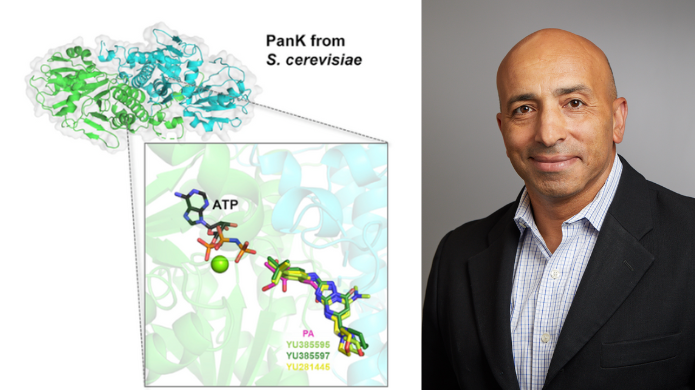Yale Spinout Curatix and Blavatnik Awardee Dr. Ben Mamoun Receives SBIR Grant

Curatix, a new Yale spinout founded by Dr. Ben Mamoun, Professor of Medicine, Microbial Pathogenesis and Pathology, has received a Phase 1 Small Business Innovation Research (SBIR) Grant. Curatix, based on Dr. Mamoun's research supported by The Blavatnik Fund for Innovation at Yale, is developing a new class of anti-fungals that disrupt an essential metabolic pathway required for the survival of fungal pathogens.
The NIH-backed funding received by Curatix will support further R&D to evaluate the biological activity of lead compounds in animals and to conduct further optimization to identify clinical candidates. This research program was initially supported by two previous awards. Ben Mamoun was a Blavatnik awardee in 2020 and 2021, and received "Best Presentation" recognition at the Yale Life Sciences PitchFest event in 2020.
Work on this class of compounds was published in the journal Structure in 2022.
STRUCTURE, VOLUME 30, ISSUE 11, P1494-1507.E6, NOVEMBER 03, 2022
High-resolution crystal structure and chemical screening reveal pantothenate kinase as a new target for antifungal development
Fungal infections are the leading cause of mortality by eukaryotic pathogens, with an estimated 150 million severe life-threatening cases and 1.7 million deaths reported annually. The rapid emergence of multidrug-resistant fungal isolates highlights the urgent need for new drugs with new mechanisms of action. In fungi, pantothenate phosphorylation, catalyzed by PanK enzyme, is the first step in the utilization of pantothenic acid and coenzyme A biosynthesis. In all fungi sequenced so far, this enzyme is encoded by a single PanK gene. Here, we report the crystal structure of a fungal PanK alone as well as with high-affinity inhibitors from a single chemotype identified through a high-throughput chemical screen. Structural, biochemical, and functional analyses revealed mechanisms governing substrate and ligand binding, dimerization, and catalysis and helped identify new compounds that inhibit the growth of several Candida species. The data validate PanK as a promising target for antifungal drug development.
